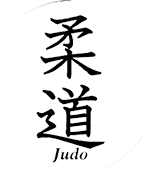 by Cichorei Kano Thu Sep 18, 2014 1:11 am
by Cichorei Kano Thu Sep 18, 2014 1:11 am
I think that these are matches typical for 1st kyû tsukinami-shiai, so I do not think that there is much to comment on the actual matches themselves. I think that it was fortunate that your matches evolved rather quickly. All in all your three matches were about the duration of what a single match could take up. This is very important since it requires quite a bit of endurance to do a full-line-up (6 people) with each match at near full duration each time against a fresh partner and no breaks. With just three people in terms of endurance it is a lot less challenging, and even more so if the individual fights are brief. Most of my black-belt students would be able to successfully do a 3-men line up, but I have only had a single student (and she was a world championship and European championship medal winner) who could successfully complete a 6-person line-up. So, keeping matches short is the way to go if you can.
For us, who are not British, the procedure appears very odd, in particular the bowing at the beginning and end with you at one side and three others at the other side. This is something I have never seen in my entire career. In my experiences with tsukinami-shiai, you step on the tatami as partner of the person who won the previous fight (unless that person just completely all competition requirements or was unable to continue because of injury), and if you win the fight, you remain while they call up and send you your next opponents, one after each match won. You typically do not know them beforehand unless you really watch carefully at the start when they call up every name to see if you are all there. So you won't hear any supportive comments from me as to the system or procedures I saw, but that obviously is totally outside of your control and will since you are just adhering to that what is required and has likely been in place for a long time. Personally, I think that line-ups should be full line-ups as they used to be and be open category without any weight-categories just as we used to do them.
I also heard someone yelling "One more, Stu" at the end of match 2 . That shouldn't normally be done. Tsukinami-shiai normally does not allow any form of coaching and is a strictly individual test. Audience (if allowed) should keep their mouths shut or be removed from the hall. Then again, I do not want to appear overly critical since, admittedly, the comment was made in-between two fights rather than during a fight.
If anything, it was the refereeing that I and probably others could start nagging about. I didn't find the refereeing steller. But in all fairness, is the refereeing during tsukinami-shiai in the West ever of a decent level ? The referee looked to me like she was still stoned from the evening before. The newaza in match 3 was broken off too quickly. According to the clock, the two of you had been on the ground for barely 5 seconds. They should have let the players continue. Newaza is rarely concluded or decisively turned after just 5 seconds. I think particularly considering that these contests are ability tests and not IJF medal contests, extensively showing one's ability during newaza is welcome. If it were me who refereed the contest, the match could well take place the entire time in newaza.
Looking at this some of my own memories came back, both good and bad. I have only good memories of my tsukinami-shiai as a 1st kyû, I have one bad memory of tsukinami-shiai as a 1st dan when I had the only time ever that I fell on my shoulder due to the incompetency of the referee, who knew me very well and framed me after I had once humiliated him when I was still an espoir and he a senior, and I have mostly bad memories of my tsukinami-shiai as a 2nd dan, mostly because although this rank really does not seem to be so exceptional, most people who obtained it in those days were much older and chose a much longer time-in-grade, in which case competition requirements were waived. So, it took me a long time to get from 2nd to 3rd dan due to a lack of opponents. There were several tsukinami-shiai I attended and had to return home because of lack of adversary. Moreover, I had several serious injuries in those days, and my scores were less decisive meaning that several times it ended in hiki-wake, and hiki-wake meant the end of your line-up. This was particularly frustrating since often times, there only was a single opponent.
Congrats with your results. What I couldn't quite figure out from your report now is whether you are now a black belt or not ? If I understand you well, you completed your competition requirement and you did your practical exam (called "theory" in the UK), so what else is there to do in order to be a black belt ?
Last edited by Cichorei Kano on Thu Sep 18, 2014 1:46 am; edited 2 times in total



